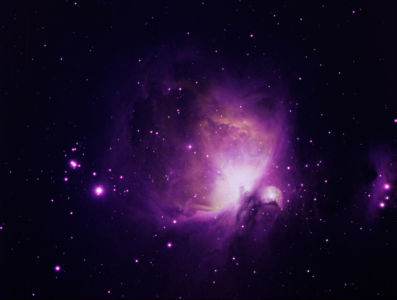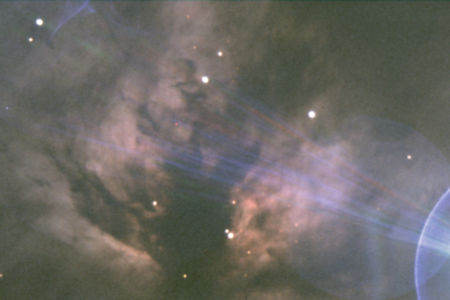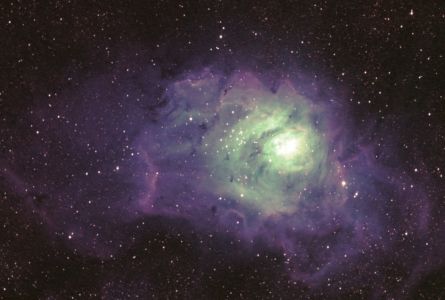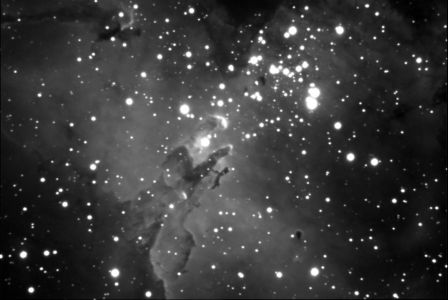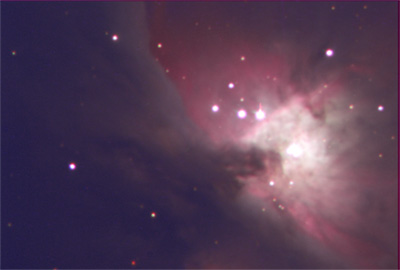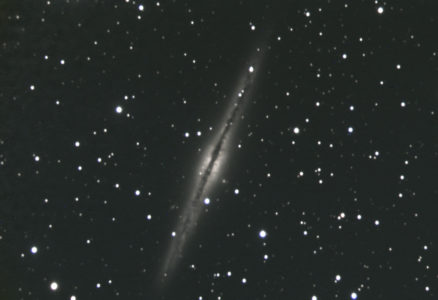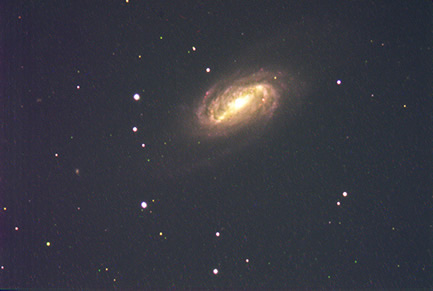Astro-photography & Science
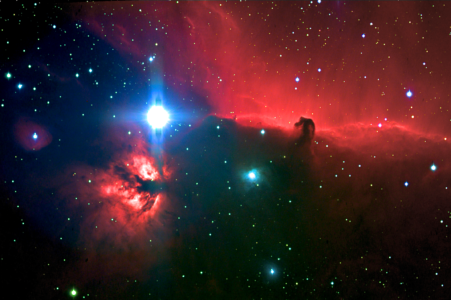
Horse Head and Flame Nebulae
The famous Horse Head (Barnard 33) and Flame Nebula (NGC 2024), in the region surrounding Alnitak, the bottom/left star in the Constellation Orion's belt. LRGB composite (luminance weight limited), Red, Green, Blue, and a pinch of H-Alpha. Roughly 3 hours of combined exposure. Stacked and processed in MaximDL. Image by M. Polansky with JJMO equipment.
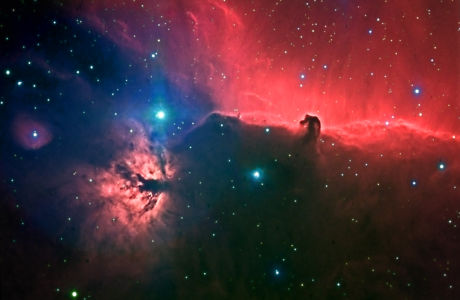
Horse Head and Flame v2
Same specs as the other Horse Head image, but with improved processing techniques to reduce the brightness of Alnitak, with better contrast and detail in the Flame and Horse Head Regions. Stacked in MaximDL, processed with layer masks for a High Dynamic Range effect in Photoshop.
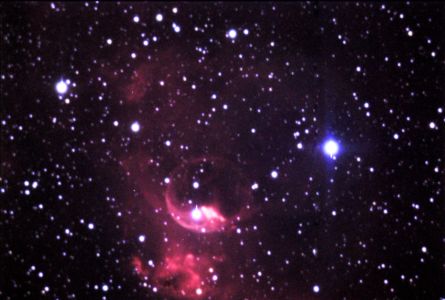
NGC 7635 - Bubble Nebula
Taken with the SBIG ST10 cam on the Meade 16 RGB filters 6.3 reducer
image by JR using JJMO equipment
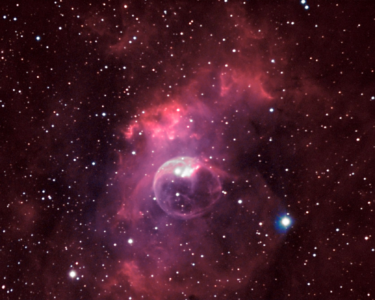
NGC 7635 - Bubble Nebula
Roughly 5 hours of exposure with the Meade 16" at f/5 and SBIG ST-10XME camera. This is a narrowband composite of HA (red), and OIII (Blue). About 2 hours of HA and 3 hours of OIII were captured and processed in MaximDL, PixInsight, and Photoshop to assemble the image.
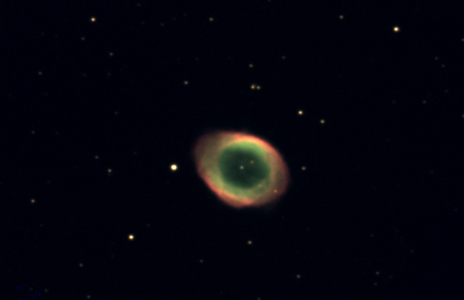
M57 - Ring Nebula
Imaged with the ST-10 on the 16", f/6.3, LRGB- roughly 8 minutes of Luminance, 5 minutes of Red, Green, and Blue. Binned 1x1. Image by M. Polansky.

M16 - Eagle Nebula
The Eagle Nebula in the Hubble Color Palette (http://hubblesite.org/gallery/behind_the_pictures/meaning_of_color/eagle.php) Clearly visible are the famous Pillars of Creation. Imaged through the Meade 16" at f/5 with the SBIG-ST10-XME, using the narrowband filters HA, OIII, and SII, colors assigned as in the Hubble link. Image by M. Polansky and C. KleinStern.

M27/NGC 6853 - Dumbbell Nebula.
Through the 16" @ f/10, ST10XE camera. False color LRGB, roughtly 85 minutes of combined exposure. A dash of visible Red, Green is Hydrogen Alpha, and Blue is OIII, binned 2x2. Image by M. Polansky.
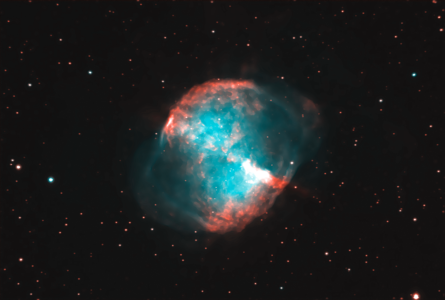
M27 - Dumbbell Nebula Revisited v2
Same raw images as the other M27 Revisited image, processed a different way. Luminance image was deconvolved using CCDSharp, H-Alpha and OIII were combined as RGB in MaximDL (HA red, OIII as blue and green). Luminance was applied in Photoshop, along with inverse masking to reduce noise, and unsharp filters to increase clarity.
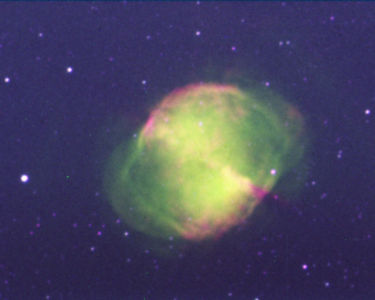
M27 - Dumbbell Nebula RGB
Taken with the SBIG ST10 cam on the Meade 16 RGB filters 6.3 reducer
image by JR using JJMO equipment
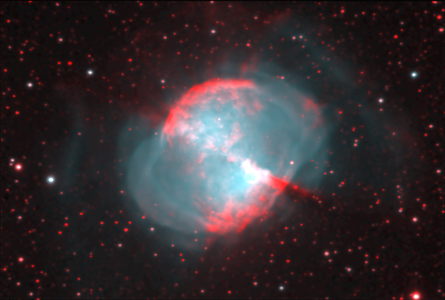
M27 - Dumbbell Nebula Revisited
Hydrogen Alpha and Oxygen III composite in more natural coloring. Roughly 6 hours of total exposure time, using 10 minute individual exposures in both filters. Imaged with the ST-10 CCD through the Meade 16" at f/6.3, by M. Polansky.
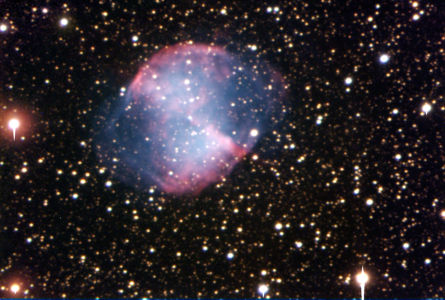
M27 - Dumbbell Nebula RGB
Taken with the SBIG ST10 cam on the Meade 16 RGB filters 6.3 reducer
image by JR using JJMO equipment
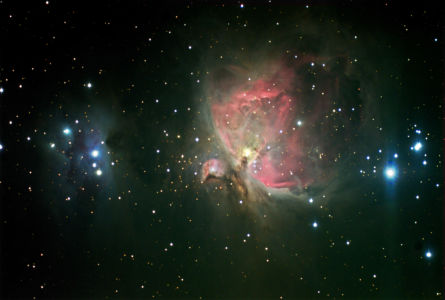
M42 - Orion Nebula
RGB Composite, using Red, Green, Blue and Luminance filters primarily on the Takahashi FSQ-106. Luminance frames of the core taken on the 16" Meade were composited in for added detail. Roughly an hour and a half of combined exposure time, under less than ideal conditions (moon, fog, clouds, or some combination over the course of 5 nights). Stacking in MaximDL, processing in Photoshop. Image by M. Polansky with JJMO equipment.
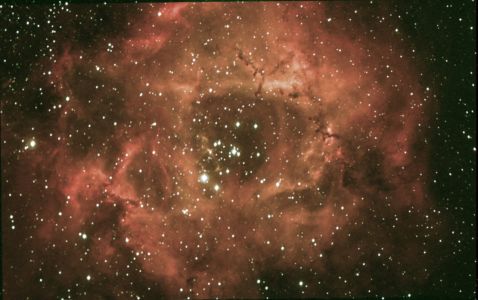
NGC 2244 - Rosette Nebula
The Rosette nebula and NGC 2244 open cluster. Image by S. Riley and J. Reynolds.
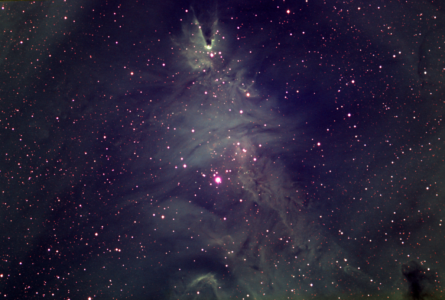
NGC2264 - Christmas Tree Nebula
Capped by the Cone Nebula, this is a false color representation using the Hubble palette. 15 minute HA exposures, 20 minutes OIII and SII. Roughly 4.5 hours combined exposure.
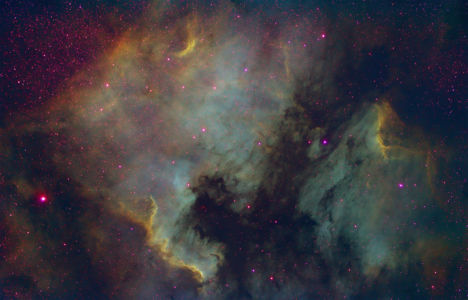
NGC 7000/ IC5070/5067 - North American & Pelican Nebulae
Large star nursery in Cygnus- Taken with an astro-modified Canon EOS 6D DSLR on the Takahashi FSQ-106 telescope. It is colored using the Hubble pallet- the combination of 12 hours of exposure time (4 hours each of SII represented by Red, H-Alpha by Green, and OIII by Blue), taken over the span of just about a month between September and October of 2015.
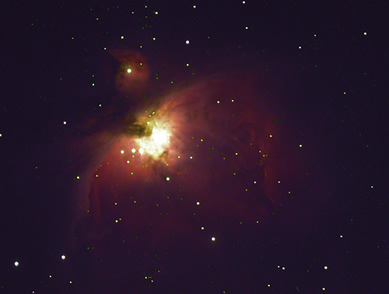
M42 - Orion Nebula
Taken actually during full moon! RGB on the 4.1 inch Takahashi fsq106
image by JR using JJMO equipment
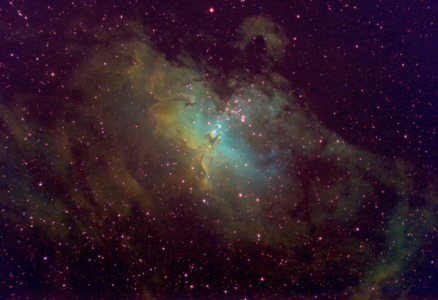
M16 - Eagle Nebula Tak
The Eagle Nebula, again in the Hubble Color Palette, imaged through the Takahashi at f/8 (1.6x Barlow). Approximately an hour of H-Alpha, two hours of SII, and about an hour of OIII. Stacked and processed in MaximDL only. Image by M. Polansky, C. KleinStern, and D. Marmaropoulou.
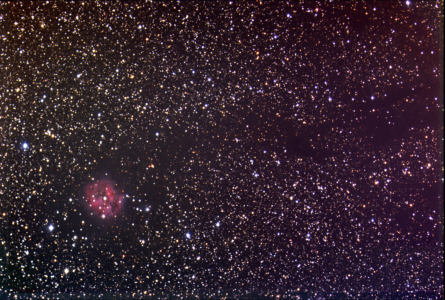
IC5146 - Cocoon Nebula
LRGB of the Cocoon Nebula in Cygnus. Taken with the ST10-XE CCD through the Takahashi FSQ-106, roughly 3 hours of combined exposure. Image by M. Polansky with JJMO equipment.
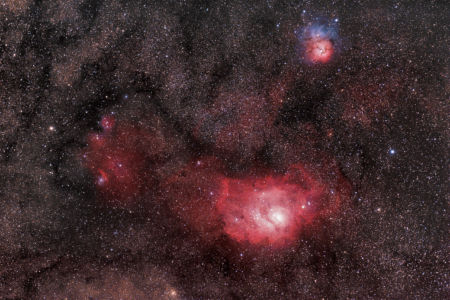
M20 & M8 (Trifid & Lagoon Nebulae)
The Trifid and Lagoon Nebulae captured in the same field of view! Imaged with a full frame DSLR- an astro-modified Canon 6D, with an hour and a half of luminance filtered exposure time (65 frames at 70 seconds each), and an hour of h-alpha (21 frames at 3 minutes each). Stacked/processed in PixInsight, combined in Photoshop.
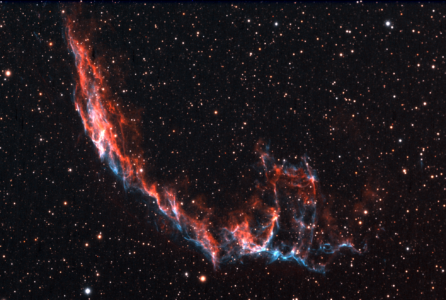
IC1340 - Eastern Veil Nebula
Narrowband- Hydrogen Alpha, Sulfur II, Oxygen III composite through the Takahashi FSQ-106 + ST10-XE CCD. Around half an hour in each filter over one night of imaging on 9/15/12. Image by M. Polansky with JJMO equipment.

Complete Veil Nebula
A wide field view of the major components of the Veil Nebula- a supernova remnant in Cygnus. Visible are the Western Veil (Witch's Broom), the Eastern Veil (Caldwell 33), and Pickering's Triangle. Taken with an astro-modified Canon EOS 6D DSLR on the Takahashi FSQ-106 over two nights in mid October 2015. The true color view is made up of 80 minutes each of H-Alpha and Oxygen III, with 4 minute sub-frames at ISO 12800. Also included is 10 minutes of Luminance- all visible light (10x1 minute at ISO 12800) to enhance coloring in background stars. Stacked and processed in PixInsight, with final touches in Photoshop.
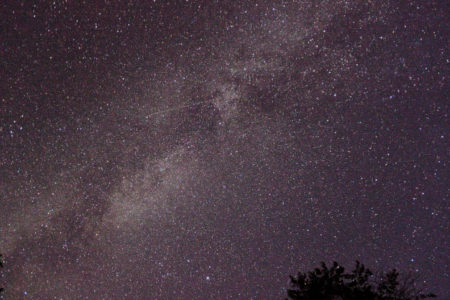
The Milky Way 1
Our own galaxy, visible on a spectacularly clear night in Bethlehem, CT. Image is a single frame, 25 second exposure at ISO 6400 with a Canon T3i, 18mm lens at f/3.5.
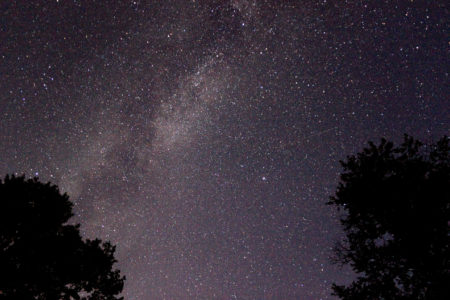
The Milky Way 2
Our own galaxy, visible on a spectacularly clear night in Bethlehem, CT. Image is a single frame, 25 second exposure at ISO 6400 with a Canon T3i, 18mm lens at f/3.5.
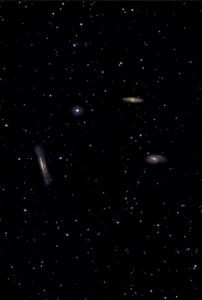
The Leo Triplet
The Leo Triplet of galaxies, featuring NGC 3628 up at the top, M66 on the bottom/left, and M65 towards the right. Whole image is taken through the Takahashi FSQ-106 telescope, with images of each galaxy through the Meade LX200 16" at f/5 composited in for extra detail. Total image exposure time is about 3 to 4 hours, in LRGB.
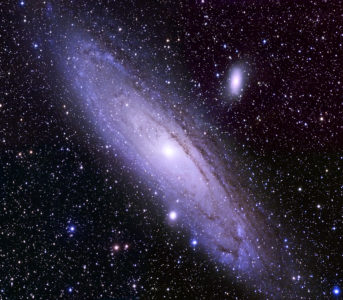
M31 - Andromeda Galaxy
This 4 image mosaic of the largest and only naked eye visible galaxy in the sky was taken over 6 nights in late fall 2014 (October - November). It was shot through the Takahashi FSQ-106ED with the SBIG ST-10XME camera with each of the 4 sections comprised of roughly 45 minutes of Luminance, 20 minutes of the colors Red, Green, and Blue, using 2 minute 30 second exposures binned 1x1 for each filter. Processing done in MaximDL, PixInsight, and Photoshop.
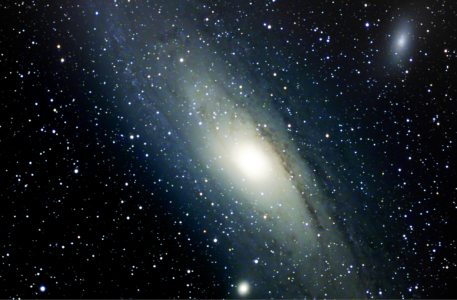
M31 - Andromeda Galaxy
Our nearest neighbor Galaxy. Imaged through the Takahashi FSQ-106. Will eventually become a composition of multiple images to encompass the whole galaxy.
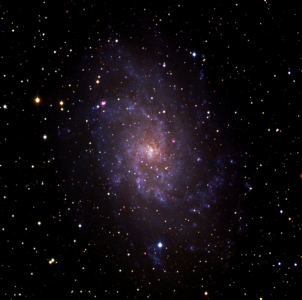
M33 - Triangulum Galaxy Revision 2
The best of both worlds- this images combines the wide field optical quality of the Takahashi FSQ-106 with the light gathering power of the 16" Meade. Cropped from the full size image, the base images are the same as the previous M33 image, with 16" images of the core aligned and seamlessly blended. Processing done in MaximDL and Photoshop, done by M. Polansky.
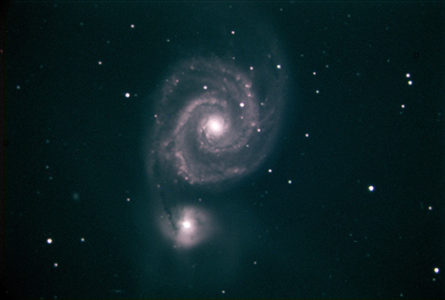
M51 - Whirlpool Galaxy
This is M51, imaged through a Meade 16" Schmidt Cassagraine.
30x Stacked Images, 10 seconds each, through Red, Green, and Blue Filters.
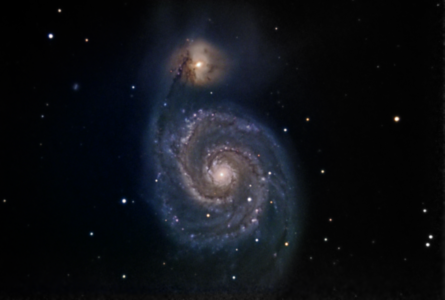
M51 - Whirlpool Galaxy
Image of M51 through the Meade 16" at f/6.3, taken 3/31/13. Image is composed of Red, Green, Blue, and Luminance images (R:7, G:8, B:15 seconds binned 3x3, L:7 seconds binned 2x2). Roughly 15 minutes worth of exposure for each filter. I'll call this a work in progress, as it's still early in the season for M51!
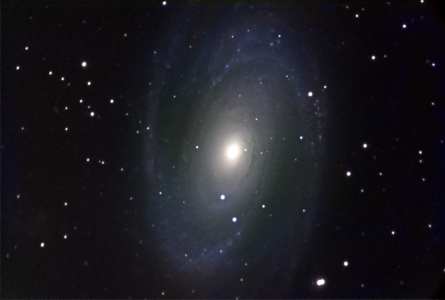
M81 - Spiral Galaxy
A spiral galaxy in the constellation Ursa Major. About 20 minutes of exposure with Luminance, Red, Green, and Blue filters- L binned 1x1 with 1 minute exposures, RGB binned 2x2 with 30-45 second exposures.
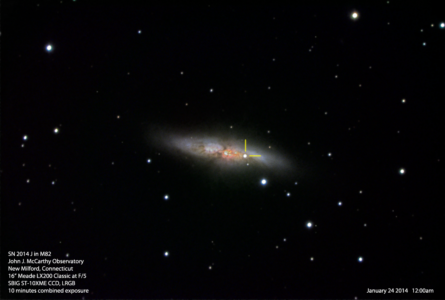
M82 - Supernova
A type 1a supernova was detected in M82 on January 23rd. We managed to image it on January 24th. Details included in image!

